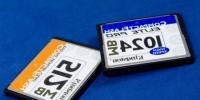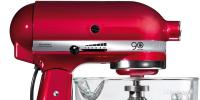How to choose the perfect hammer drill for your home
A conventional electric drill drills even holes in wood, plastic and metal. The impact rotation mode makes it easier to work with hard materials, however, it is better to entrust the work with concrete and stone to a special drilling tool - a perforator. Read our article on how to choose a hammer drill for your home.
Hammer drill or impact drill?
All modern electric drills have a hammer drilling mode. Can a drill compete with a rotary hammer in the processing of hard materials - concrete and stone? Our answer is unequivocally negative. The fact is that the impact of the drill is very weak, its strength is not even indicated in the technical specifications.
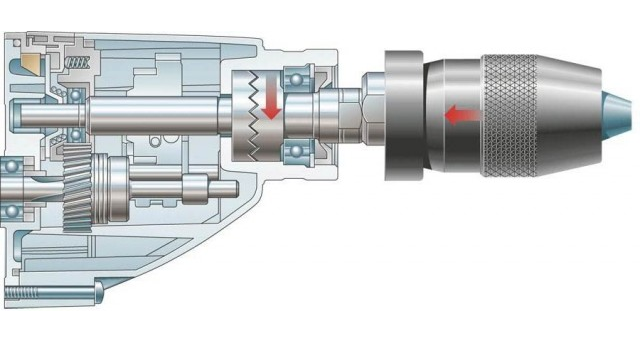 Ratchet wheels jump over each other
Ratchet wheels jump over each other The picture shows how the drill is arranged: the reciprocating movement of the cartridge is given by ratchet wheels that jump over each other during rotation. When drilling, this is felt as a slight vibration of the tool. To get at least some effect, you need to press the drill into the wall with a force of 10-15 kilograms.
Another thing is a perforator. He drills a hole in any concrete, as in a tree. It's all about the impact force, which reaches tens of joules. Helps to develop such force - pneumatics.
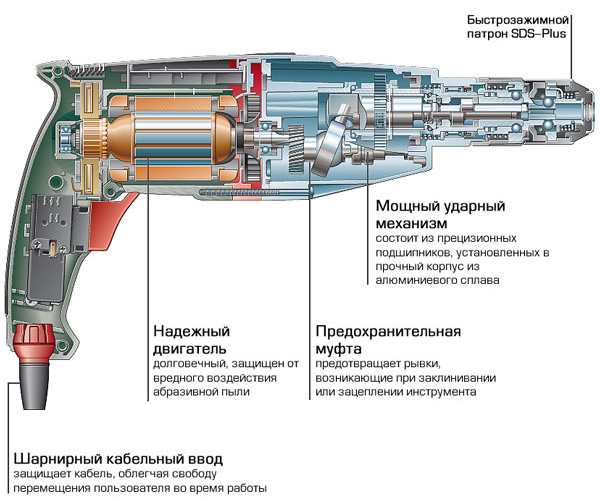 Air pressure increases impact energy
Air pressure increases impact energy The diagram shows one of the options for the design of the perforator. The electric motor rotates the shaft on which the oscillating bearing is installed - it is also called "drunk". The bearing is connected to the wall of the air cylinder. Inside the cylinder, an air gap separates a flying piston from the wall, to which a striker is attached, which acts on the tool. Due to the oscillation of the bearing, the pressure in the cylinder either increases or decreases. Due to the air pumping, the impact force on the striker is significantly increased.
The first hammer drill was invented in the middle of the 19th century for miners. A manual drilling machine chipped off pieces of rock in the mine. The electric hammer drill appeared in 1932.
Although a drill and a hammer drill are similar in appearance, they are completely different tools. In the closet of the home master, of course, there should be an electric drill for drilling holes. But, if you are repairing an apartment with concrete walls, you plan to install sockets, hang shelves and chisel grooves, we recommend taking a puncher - you will spend ten times less effort to put the apartment in order.
The disadvantage of a perforator is a loud rattling sound that spreads throughout the house so that the source cannot be localized.
A hammer drill costs more than a drill, but your doubts will disappear as soon as you make the first hole and experience what this powerful machine is capable of.
Criteria for choosing a perforator
When going to the store for a puncher, determine in advance which holes you are going to drill: whether you are putting open sockets (5 mm), pulling a cable (10 mm) or pulling an inch pipe (31 mm) through the wall; Do you need a jackhammer - knock down old tiles.
impact energy
The main parameter of the perforator is the energy transmitted by the striker to the processing tool, it is measured in joules. The larger this value, the larger the hole the device is able to make. However, you should not chase numbers, a machine with an energy of 27 joules is similar to a jackhammer of road workers and weighs almost 12 kg. For drilling holes with drills up to 30 mm in diameter, an energy of 1.5–2.5 joules is sufficient.
Perforator weight
The weight of the device is directly related to the impact energy. Conventionally, they are divided into three categories: light (up to 4 kg), medium (4-5 kg) and heavy (over 5 kg). The smaller the weight of the device, the easier it is to hold it in your hands, but the impact energy of a machine weighing 2 kg will be 1.4 joules - this is enough to work with a drill up to 18 mm in diameter.
The lightest hammer drills are almost no different from an electric drill. For them, nozzles are produced with a cam chuck that clamps simple drills. Such a versatile two-in-one device will save you money.
Engine power and shaft speed
The industry produces rotary hammers with power from 500 to 2000 W, but this parameter is not decisive. Manufacturers select the optimal power for each model. If you are drilling a hole in a concrete wall with a depth of more than 50 cm, we recommend that you take a machine with an engine of at least 1 kW. The friction in the wall is very high, the slightest distortion - and the low-power engine will stop.
The spindle speed is also not important, it can be from 600 to 1.5 thousand revolutions per minute. The principle of operation of the perforator is the impact destruction of the material, the rotation of the drill is only necessary to remove dust from the processing zone. Too fast rotation will increase tool wear.
A useful feature of the rotary hammer is the automatic adjustment of the rotation speed. The electronic circuit selects the speed according to the density of the processed material.
Operating modes (table)
Modern hammer drills support three main modes of operation (drilling with impact, drilling without impact, and chiselling). In stores you can find devices with different combinations of these modes. As a rule, rotary hammers with one and two modes are cheaper.
| Mode | Application |
| Drilling without impact | In this mode, the rotary hammer works like a conventional drill, drilling holes in wood, plastic or metal. Tool translation is disabled. |
| Hammer drilling | The main mode of operation of the perforator. The drill makes reciprocating movements, breaking off pieces of concrete. Dust and crumbs are carried out by the rotating spiral groove of the drill. |
| Impact without rotation (hollowing) | In this mode, the machining tool does not rotate. Instead of a spiral drill, a chisel, chisel or pike is placed. The puncher breaks off a tile or cuts down a piece of a wall. |
| Setting the chisel to the desired position | To work in hard-to-reach places, it is important that the fixed chisel is in a predetermined position. Manufacturers sometimes distinguish the fourth mode of the puncher - the ability to put the tool at a certain angle. |
Cartridge type
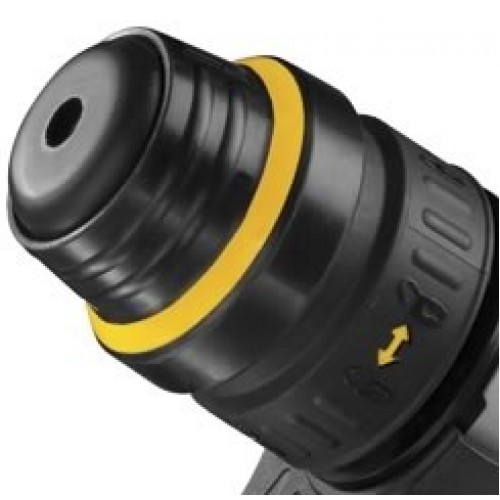 The de facto standard for small and medium rock drills
The de facto standard for small and medium rock drills Especially for rotary hammers, Bosch developed the SDS plus and SDS max cartridges. In them, the tool is clamped instantly and never unscrews itself (unlike cam chucks).
The most common cartridges are SDS plus - approximately 60% of rotary hammers. They are designed for drills with 10 mm shanks and are used in light and medium tools. SDS max cartridges are used in heavy perforators, for drills from 20 mm in diameter.
We recommend taking home devices with SDS plus cartridges, drills and drills, shovels and chisels, crowns and nozzles are produced for them. The stores sell chucks with these shanks - your rotary hammer will turn into a universal drill.
Engine location: vertical or horizontal
Structurally, rotary hammers come with a horizontal engine and a vertical one.
The first one is similar to an electric drill in terms of the shape of the body and the position of the controls: long and narrow, with a short handle and a trigger. With such a tool it is convenient to climb into a cramped place - a cabinet or an air duct. When drilling deep holes, the machine runs smoothly, the drill takes away less. But it is difficult to hammer the ceiling and cut grooves with such a puncher - you have to twist the brush, your hands get tired quickly.
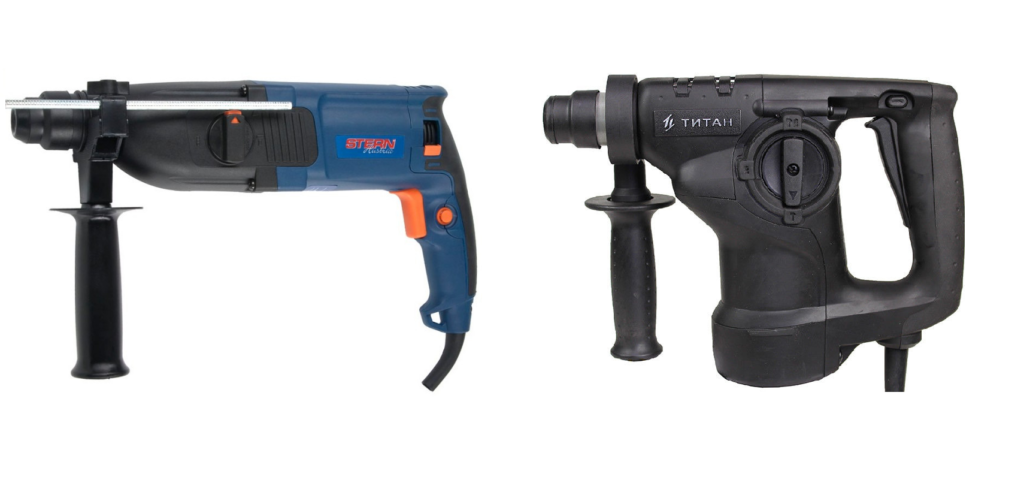 On the left - an example of a rotary hammer with a horizontal motor, on the right - with a vertical one.
On the left - an example of a rotary hammer with a horizontal motor, on the right - with a vertical one. A vertically mounted motor takes up less space and cools better. The machine lies in the hands, like a Kalashnikov assault rifle, is stable during operation and is well controlled. Due to the position of the operator's hands on the same axis with the chisel, it is convenient to work with the puncher both from the waist and with one hand. The floor-to-ceiling strobe is cut in one go without any fatigue.
Additional functions
A good hammer drill is equipped with additional features that increase the convenience and safety of working with the tool.
| Additional function | What is useful |
| Smooth start | When the collector motor starts to rotate, an increased (starting) current occurs in the electrical network. The electronic circuit will smoothly increase the voltage on the motor and will not overload the network. |
| Release clutch | The drill hit the rock and got stuck, a common occurrence when drilling deep holes. To prevent the collector motor winding from overheating, the clutch mechanically disconnects (disengages) the drill from the motor shaft. |
| Shaft reverse | If the twist drill is stuck in the wall, it is enough to turn on the “reverse” and it will unscrew itself from a difficult position. |
| Automatic speed control | Electronics changes the number of shaft revolutions depending on the load on the tool and maintains them at an optimal level |
| Ruler-limiter | The ruler is attached to the body of the device, graduated in units of length. It will rest against the wall as soon as the drill has plunged to a predetermined depth. |
| Vibration protection | The hammer vibrates during operation. To protect the operator's hands from vibration, the tool handle is isolated from the body by a vibration damping spring. |
| Carry case | In a plastic case, the tool is protected from dust and damage, spare parts and cutting tools are also placed there. |
| Equipment | A good manufacturer includes several drills, spare carbon brushes for the engine, lubrication for shanks, and a cam chuck in the perforator kit (puts in a suitcase). |
Do you know that a hammer drill can work as a construction mixer? Under the SDS plus cartridge, nozzles are available for mixing cement or tile adhesive.
Power supply
Most of the punchers lying on the shelves of stores are powered by the mains. These tools create enough impact energy for serious work. However, there are battery powered models. Their disadvantages are obvious - low impact energy and short operating time. Choose such a hammer drill only if you know why you need it: an aerated concrete house is being built in a field, the light is not connected to the site, and sockets need to be bred.
To sum up: the characteristics of the ideal tool for the home
For the home, it makes no sense to buy a professional device capable of crushing monolithic slabs for the entire shift, so we recommend purchasing middle-class devices. The most famous and best brands are Makita and Bosch, but you can take Sturm, Hitachi or Interskol.
Life shows that a typical repair plan will include hanging shelves, installing sockets, knocking down tiles, and the diameter of the holes made will not exceed a half-inch pipe (21 mm).
When installing a split system, the usual diameter of the hole in the outer wall is 65 mm, this task is for a professional tool. A less powerful puncher is suitable for mounting the indoor unit.
- Power: 500-1000W.
- Impact force: 1.5–2.5 joules. Such energy is enough to drill concrete and cut grooves in the walls. If you need to break a wall, you should take a tool with more energy.
- Operating modes: simple drilling, drilling with impact, drilling without impact.
- Protective clutch. If you work with complex material - Soviet concrete slabs with stones and rebar, drill deep holes of large diameter, the drill may jam. The clutch will protect you from injury, and the device from overheating.
- Chuck SDS plus. A rich selection of nozzles, drills and chisels with such a shank. Quick tool change. Reliable fastening - the tool does not fall out of the cartridge.
Rating of popular models
The table shows important characteristics of popular rotary hammers and gives a brief assessment of these models.
Table: the best punchers for home use
| Model (Brand/Factory) | Impact energy (J) | Weight, kg) |
Power (kW) |
Operating modes | Additional features | Price, rub.) | Max. concrete drill diameter (mm) | A comment |
| Makita HR 2450 (Japan/China) |
2,7 | 2,4 | 0,78 |
|
|
6 900 | 24 | Reliable and durable tool from a well-known manufacturer, good price/quality ratio. |
| Bosch GBH 2–26 DRE (Germany/Germany) | 2,7 | 2,7 | 0,8 |
|
|
9 000 | 26 | High quality German instrument. The disadvantage is the high price, expensive spare parts. |
| SPEC-BPE-620 (Russia / China) | 2,65 | 2,4 | 0,65 |
|
|
2 700 | 24 | Inexpensive home tool. |
| Sturm RH2517 (Germany/China) | 5,0 | 5,65 | 1,7 |
|
6 800 | 36 | Compact and powerful device with vertical motor. Good equipment, affordable price. |
|
| AEG KH 28 Super XE (Germany/China) | 3,1 | 2,8 | 1,0 |
|
12 700 | 28 | Reliable tool for professionals. Too high price for a house. | |
| DeWALT D 25133 K (USA/China) | 2,9 | 2,6 | 0,8 |
|
7 800 | 26 | Lightweight tool for home use. | |
| Energomash PE-25500 (Russia/China) | 2,0 | 2,45 | 0,6 |
|
|
2 900 | 20 | An inexpensive device for the home is to drill holes for shelves and cornices. |
| Sturm RH2550 (Germany/China) | 2,1 | 2,7 | 0,55 | Protective clutch. | 2 900 | 20 | Inexpensive home repair tool. The disadvantage is poor equipment. | |
| Sturm RH2565 (Germany/China) | 3,4 | 5,0 | 0,650 |
|
|
4 700 | 26 | Powerful and inexpensive tool for all kinds of work. Good equipment. The body with a vertical engine does not fit into all the slots. |
| Makita HR 2470 FT (Japan/China) | 2,7 | 2,8 | 0,78 |
|
10 000 | 24 | Sold as an expensive tool for professionals. But, the apparatus cannot break the walls. |
Photo gallery: perforators from the rating
Makita HR2470FT 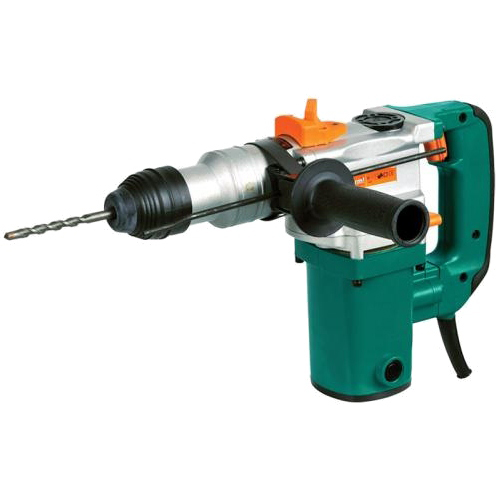 Sturm RH2565 Sturm RH2550
Sturm RH2565 Sturm RH2550 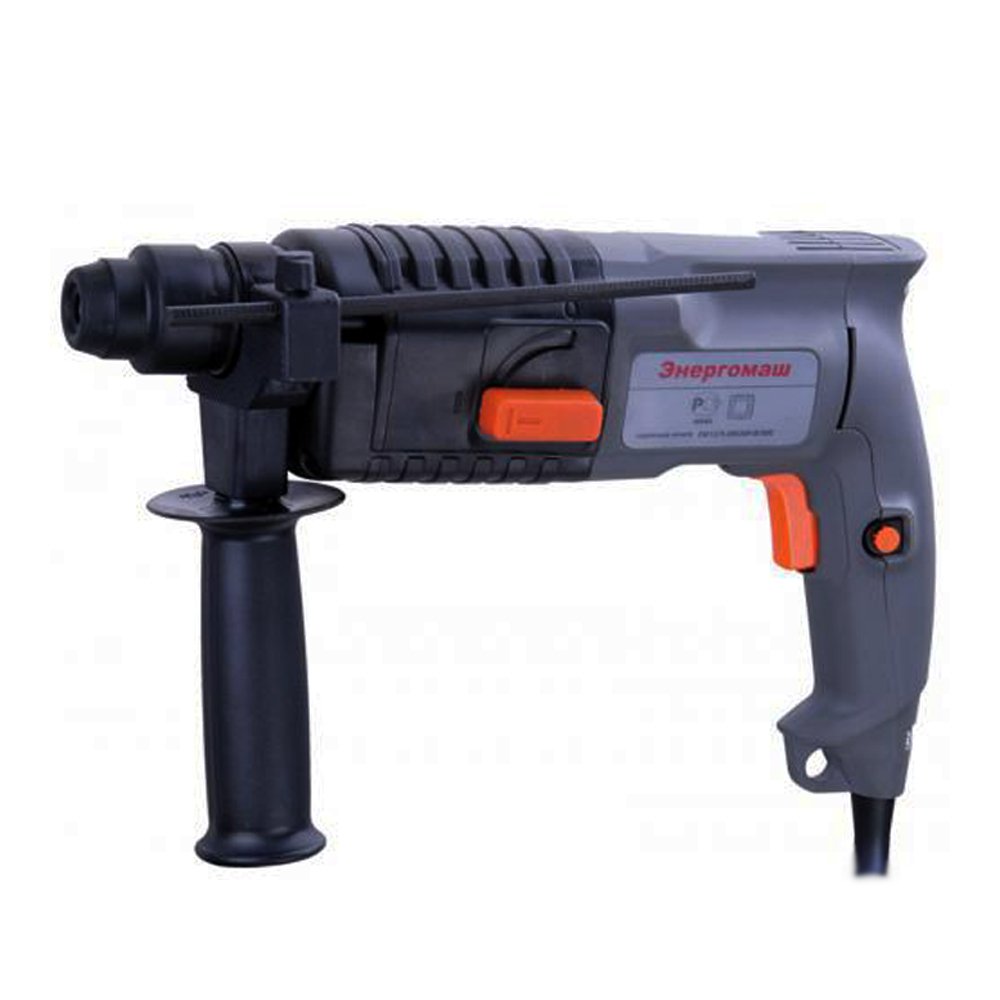 Energomash PE-25500 DeWALT D 25133 K AEG KH 28 Super XE Sturm RH2517
Energomash PE-25500 DeWALT D 25133 K AEG KH 28 Super XE Sturm RH2517 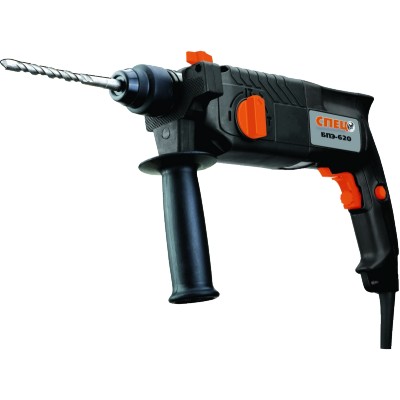 SPEC-BPE-620 Bosch GBH 2–26 DRE Makita HR 2450
SPEC-BPE-620 Bosch GBH 2–26 DRE Makita HR 2450



